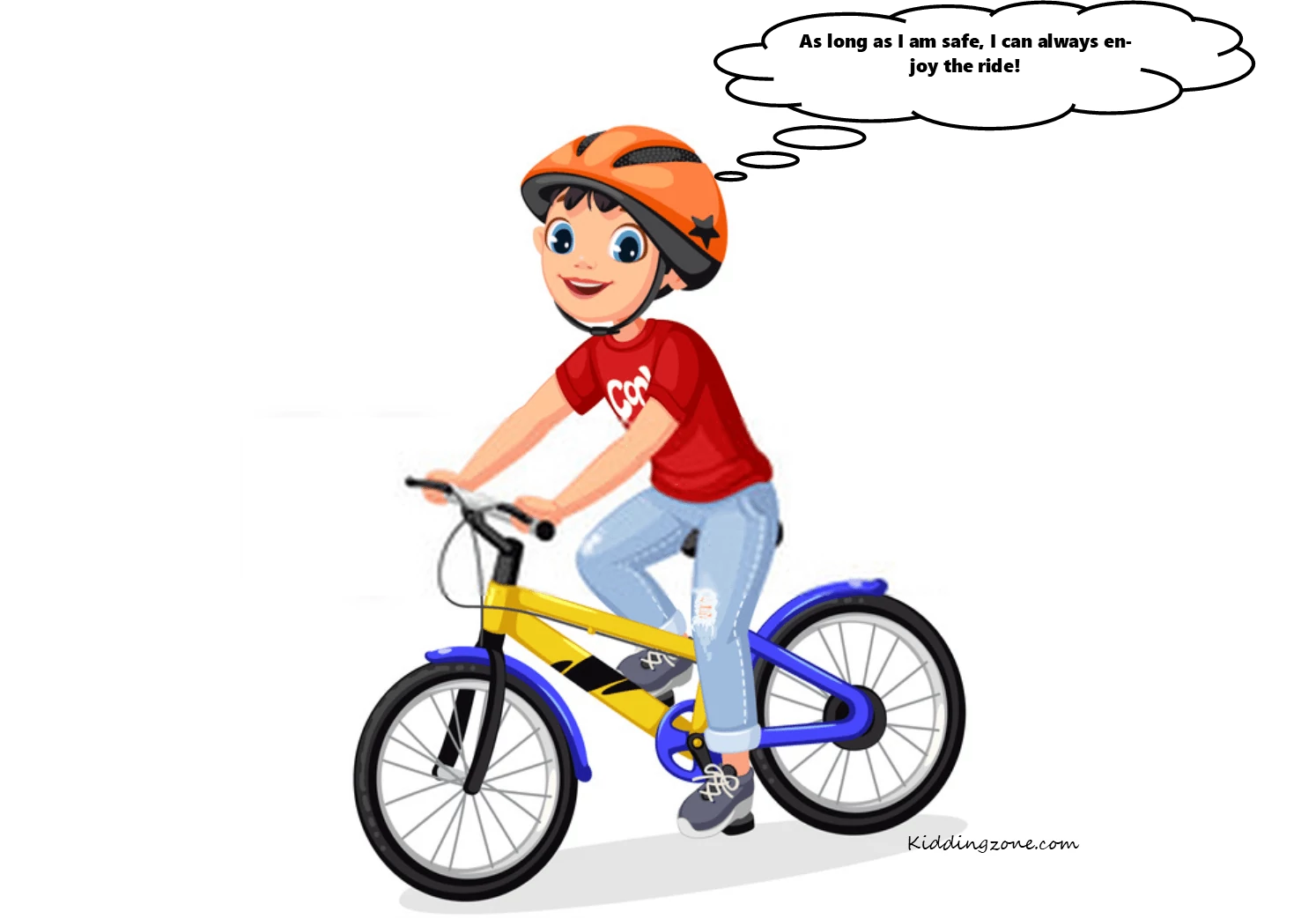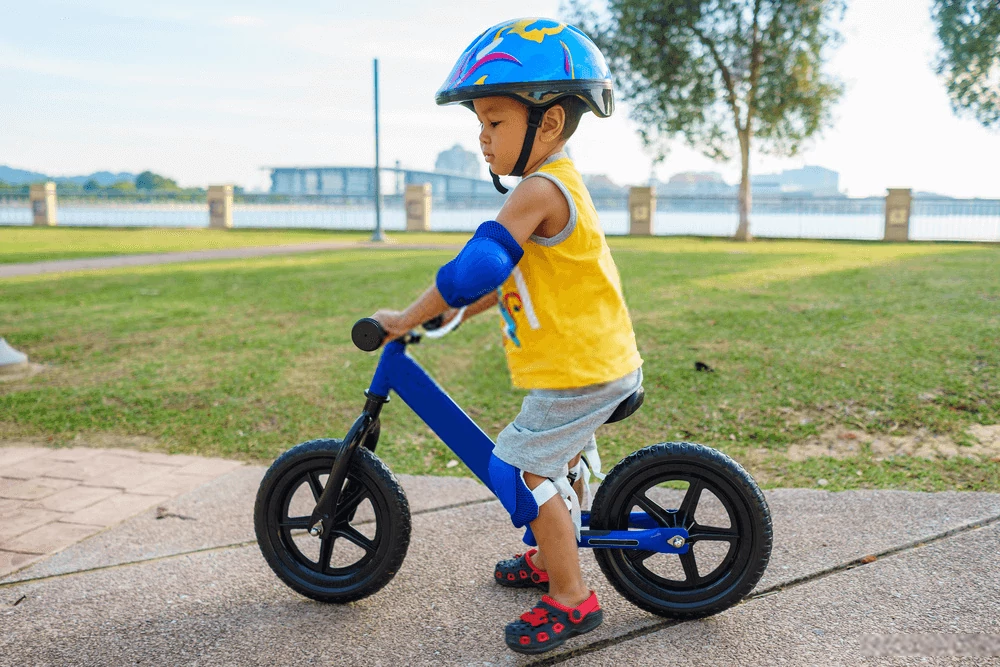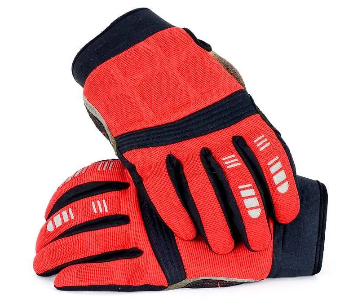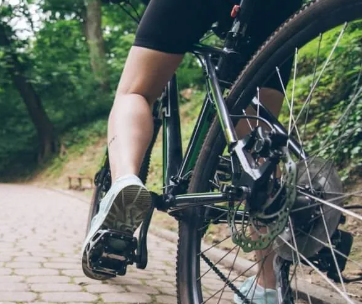Bike riding can be described as a whole lot of things! It can be fun. It can be exciting. It can be adventurous and thrilling, but sadly, it can also be risky!
In reality, bike riding shouldn’t be dangerous. In essence, it is a great way to exercise and keep fit, spend leisure time, bond as a family and as a result, even conserve the environment.
And guess what; bike safety gear bridges the gap between a dangerous riding experience and a fun riding experience.
Why is bike safety so important?
It’s simple; although riding a bike is fun, riders are more predisposed to accidents when precaution isn't taken.
It is human nature to ignore the dangers that are associated with activities that we love. So we’ll bravely take on the role of “party-pooper” and deliver a few hard facts that all riders have to come to terms with to realize why bike safety is so important.
- After football, biking is the second most frequent sport that leads to children ending up in emergency departments in hospitals.
- Every year, over 200,000 children end up in hospitals and emergency rooms due to bike-related accidents. And while we may want to blame other factors, a lot of the time, these accidents can be prevented by wearing safety gear.
- Hundreds of children die from bike-related accidents each year. In fact, in the US, an estimate of about 100 children succumb to death following bike injuries.
- Properly fitted helmets are estimated to reduce the risk of head injuries by at least 45% - sadly, less than 50% of children under 14 usually wear a helmet.
The truth is that bike safety gear plays an important role in reducing accidents and protecting riders in the event of an accident.
Now, do you understand why it is so important to follow necessary bike safety regulations?

Who is most at risk of bike-related accidents?
It is reported that an estimate of boys between 10 and 14 years old are the most likely to get involved in bike-related accidents.
This is not to say that younger or older boys beyond that age range aren’t susceptible to accidents or that girls generally are immune to accidents but to point out that it is at this age (10-14years) that they are usually rowdy and experimental and even tend to get rebellious.
The result of this rebellion and decline in wearing helmets is that it makes them susceptible to serious bike injuries.
That leads us to the next question.
How can I keep my child safe on a bike?
Now that all the sad facts are out of the way let’s see how you can prevent your child from being part of those statistics.
There are many safety precautions that you can take to ensure that your kid remains safe as they head out for a ride.
Typically safety gear is divided into two: body safety gear and bike safety accessories. Let’s take a look at both.
1. Ensure your child has safety gear when riding their bike
These are gears that are worn on the rider’s body to protect them from an accident's impact.
In practice, helmets are the principal bike safety gear. This is because the head is the most commonly injured part of the body in bike accidents and crashes.
They will save you quite a lot from the face, head, and brain injury in the event of an accident and death in the worst scenarios.
So profound is the impact of helmets that even in the U.S, all states, except for three, require wearing a helmet while riding as part of the law.
The safest Kids' helmets are certified by Consumer Product Safety Commission (CPSC) to meet their safety standards or be developed by ASTM, SNELL, or ANSI.
To know that the helmet is certified to the best standard, they should have a sticker embedded into the helmet. However, there are other helmet-related recommendations that we will look into it just a bit. In the meantime…
2. Ensure that the child wears knee and elbow pads, Chin Guards, and Riding Gloves
These cycling gears help protect your hands in the event of an accident but are also helpful as they enhance your grip on the handlebars. If the handlebars are held to precision, then the chances of your hands slipping are very rare. We have reviewed the best Kids' knee and elbow pads and kids' cycling/biking gloves to help you make the right choice, read our reviews, and get your little tots the best.
3. Ensure the kid carries a whistle
A whistle can be useful in alerting parents of your whereabouts in case you get lost or in the event of danger.
These will also save you a lot from stranger danger!
4. Ensure that the kid wears the right shoes
The right bike shoes are those that have a firm base as they help grip the pedals. That means more sneakers and riding boots and fewer flip-flops or slippers.
And while you’re at it, ensure that your shoelaces are tightly strapped and do not make an attempt to ride barefoot!
5. Ensure that the kid wears the right cycling clothing
Loosely-fitted clothes tend to get caught up in the chains or bike spokes, and they put you at risk as this may affect your next pedal stroke resulting in you falling off the bike or bruising yourself.
6. Get the child some safety accessories for their bike
These are features that enhance your safety on a bike. They include:
6. Embellish your Kids' bike with reflective materials
Reflectors are commonly mounted on the bike’s wheels as well as the back of the seat.
They aid with enhancing one’s visibility on the road. You always want to ensure that other road users can see you because they are less likely to bump or run into you if they can see you.
7. Install head and tail lights on your Kids' bike
Bike lights also enhance one’s visibility on the road and, in turn, increases one’s safety. They are critical when riding at night.
8. Accessorize your Child's bike with a bell
This is a fun way to help you alert other road users of your presence so you can avoid bumping into them and vice versa.
What precautions should you take with bike safety accessories?
Many people know they should wear a helmet, but quite a handful are unaware of how to do it. And while you may be thoroughly equipped with bike safety gear, it doesn’t mean much if you are riding the wrong bike.
Are you wondering if your child should wear a bike helmet and what precautions should you take with your bike? Worry not; that’s what we are here for!
Tips for Maximum Kids' Bike helmet safety
As mentioned earlier, you always want to ensure your helmet meets CPSC standards. These have to do with the helmet being made of the right protective material, which is fit to protect you.
When it comes to bike helmet safety, you need to go a step further and ensure the following:
1. Ensure that the helmet fits you well
As a parent, you must purchase a correctly sized helmet for your child’s head. We have discussed elsewhere how to fit a kid's helmet - ensure that it is snug.
Don’t make the mistake of purchasing an oversized helmet; try to fit by wearing a hat underneath. The chances are that the helmet will slip off, not to mention how uncomfortable that might be for the child.
A big helmet is the equivalent of a loose helmet. A loose helmet has minimal effect and puts you at risk in an accident as it will likely fall off.
Simultaneously, ensure that you are wearing a bike helmet and do not try to substitute it for a football helmet, thinking it will have the same effect.
2. Ensure that the helmet is worn correctly
The right way to wear a helmet has three rules:
Eyes: the helmet should not exceed the space of two fingers between the eyebrows and the helmet.
Ears: the straps should come to a “V” shape under the ears.
Mouth: the space between the chin and the buckled straps shouldn’t exceed two fingers.
Be sure always to fasten the straps while you’re at it.
3. Ensure that the child wears a helmet each time they ride
It is important to wear a bike helmet every time you go out for a ride, even if it’s just for a short distance and no matter how close you are to your house.
Contrary to popular belief, many accidents occur near one’s neighborhood (driveways, sidewalks, and bike paths). Therefore being close to home should not be an excuse for not wearing a helmet.
All said and done, and a clean helmet attracts the wearer. We have covered how to clean a kid's helmet in our previous posts, which can be useful.
4. Educate the child to avoid damaging the helmet and replace it once damaged
Carelessly throwing the helmet might damage it, preventing it from serving its protective role.
Simultaneously, if the helmet is already damaged or shows signs of wear, such as cracks on the helmet and broken straps, then it is time for a replacement. More importantly, if the helmet has already been involved in an accident such as a crash, you should discard it and get a new one.
Safety Tips for Kids' Bike safety
Before heading out to ride, you need to ensure the following:
1. Ensure that the bike is correctly sized for you
Riding a bike that is the right size for you helps keep you safe- because you are more likely to lose control, fall off of a bigger bike, and eventually hurt others.
A correctly sized bike is one that leaves two to three inches of clearance between the top bar of the bike and the rider’s inseam/crotch with the rider’s feet planted on the floor.
Additionally, you should be able to comfortably sit on the seat with your hands on the handlebars.
Check out our guides and reviews:
- Bike Sizing Chart and Guide
- How to choose the right kids' bike
- Best Kids' Pedal Bike Review
- How to choose a kid's BMX Bike
- How to choose kids' Bike tires
- Teaching kids about gears on their bikes
2. Ensure that your bike is in the right condition for riding
If the bike is correctly sized, you still need to step further and ensure it is fit for safe riding.
To do so, inspect the bike to ensure the brakes are not sticky or hard to engage, tires are properly inflated, oil is in check, and the seat, handlebars, and wheels fit tightly.
How should you instill the importance of bike safety in your kids?
As we said, many parents struggle with enhancing bike safety practices in their children, especially as they get older, and show disinterest in such “lame” and “uncool” tendencies. So how should you get them to practice safe riding?
1. Start early
If your child wears a helmet and other protective gear as soon as their first riding experience, then they are less likely to rebel against wearing them.
And the more they wear these gear, the more habitual it becomes.
2. Explain the importance of safety gear to them
While you’re at it, be sure to explain why they need to take these precautions
If your child has no understanding of the effect that a helmet has on their riding, then they won’t wear one
On the contrary, once they have a better experience of the reason for doing something, they are more likely to have a positive attitude towards it
3. Be firm
If your child shows disregard to the protective gear, that’s when your authority as a parent comes into play. Be firm about them wearing the gear, and the child will sense the importance of it.
Do this by making them understand that they don't get to ride their bike if they don’t wear their safety gear.
4. Set a good example for them to follow
Another known fact about kids is that they usually learn through observation and mimicking.
In other words, your child is more likely to put on safety gear as they head out to ride if they see you doing the same.
5. Make it fun!
This method never fails!
If your child gets to choose their own helmet and decorate it, they are more likely to wear it.
Be they young or older, when kids get to choose their own helmet or accessories (in their own style), this forms a bond with the gear and increases their chances of wearing it.
6. Reward them
Positive reinforcement always works like a charm.
By praising your child or giving them treats once they wear the helmet without being pressed to do so, they will end up wearing it more often.
Bike safety rules and cycle paths
Safety doesn’t just have to do with having the right bike and accessorizing with the proper safety gear. It also entails following road safety rules.
For starters, you need to identify safe and unsafe areas for bike riding.
Children under the age of ten are much safer riding on the sidewalk or bike paths. This is because streets are more often than not quite busy, and at this age, they do not know how to navigate their way with passing cars.
A bicycle path is a dedicated area for safe riding. Most cities have bicycle paths where riders can freely cycle without putting their lives at risk.
Therefore sticking to riding on sidewalks and bike paths is the best way to keep them safe.
As for bike safety, be it on the streets, sidewalks, or bike paths, the following safety rules ought to be followed with precision:
1. Yield to traffic/ Be sure to check the road for other road users
As the saying goes, prevention is better than cure.
When riding in the streets, it is important to always keep an eye out for other vehicles. Still, slow down or stop to check for traffic before proceeding if leaving your driveway, an alley, or a curb.
Check left, right, then left again before making your move to avoid a collision.
2. Go with traffic flow
Maintain riding on the right side of the road and never ride against traffic, as doing so usually puts you at risk of a collision.
3. Obey all traffic rules
Stop at all stop signs and follow obey the traffic rules. Remember your bike is a locomotive, too, so you aren’t exempted from the rules
4. Be predictable
Avoid riding too close to parks cars – ride as far out as possible to avoid unexpected car doors opening or run-ins with those pulling out.
5. Cross at intersections
Use the crosswalk to head on the other side and avoid getting into accidents with cars whose drivers can’t see you coming.
6. Ride single-file on the street with friends
Maintain a straight line and avoid swerving between cars at all costs, which puts you at risk of a collision.
7. Always signal your turns
Learning hand signals is important as it lets other drivers know which direction you intend to go and thereby avoids running into you.
These are the hand signals you should always be aware of (and use your left arm when signaling):
Left turn – check behind you first and extend your arm straight out to the left and ride out slowly
Right turn – check behind you and either hold your right arm up from your side or bend your left arm up at the elbow to form an “L” shape
Stop - check behind you bend your elbow downward in an upside-down “L” shape, then come to a stop
Be sure always to use the correct signals and avoid changing directions without first looking behind you and signaling.
8. Stay alert at all times
Don’t wear headphones as the music will distract you from surrounding noises such as a hooting car or oncoming traffic.
9. Watch out for road hazards
These include potholes, puddles, broken glass, et cetera.
And if you happen to come across any and you are riding the lead bike, alert your friends so that they too can avert them.
10. Only one person should ride the bike at a time
This is especially important if riding on a busy street.
11. Control your bicycle
Always ride with both hands on the handlebars
If you have any items to carry, ensure that they are in the bicycle carrier or backpack
12. Avoid riding in the dark
It is much safer to do so in the day when you can see clearly.
If you have to ride in the dark or low light settings, make sure that your bike has both head and tail lights. Wearing bright or neon-colored clothing also enhances your visibility.
Remember, just because you can see the driver does not mean that they can see you.
Final Words
Riding is fun, and it can remain fun when done correctly.
Safety gear can make the difference between a ride ending in a happy/ relaxed mood or end in tears in an emergency room and, worst-case scenario, death.
Remember that setting a good example for your kid by wearing safety gear will get them to do the same. If you are the type of parent who relies on sheer luck for their protection, you don’t really need to have a child with the same mentality. Counting on luck to protect your child is as good as nothing.
Stay safe!





Comments